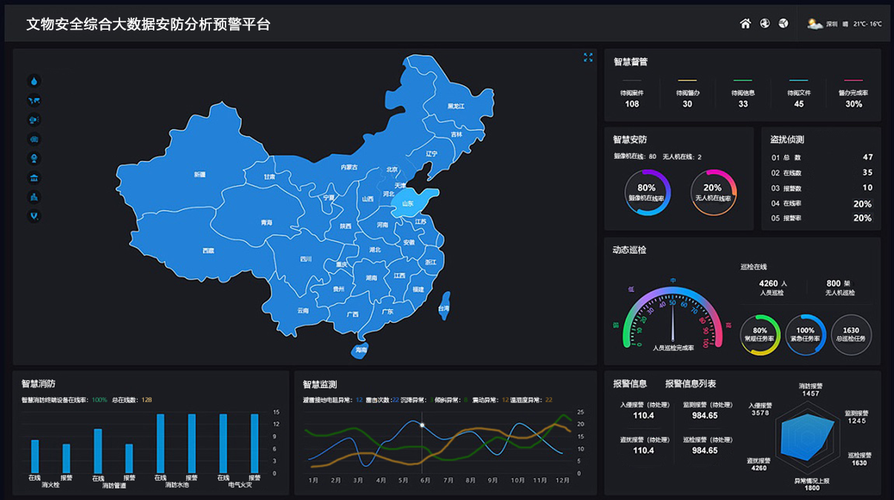php和大数据有关系吗
Title: Managing Large Data Sets with PHP
In today's digital landscape, managing large volumes of data is a common challenge faced by many industries. PHP, as a versatile scripting language, can be effectively utilized for handling big data tasks. Whether you're working with ecommerce platforms, social media analytics, or any other dataintensive application, PHP offers various techniques and tools to efficiently manage large data sets. Let's explore some strategies and best practices for dealing with big data in PHP:
1. Efficient Database Management:
Database Optimization:
Start by optimizing your database structure and queries. Use indexing, proper data types, and normalization to ensure efficient data storage and retrieval.
Query Optimization:
Write optimized SQL queries to fetch only the necessary data. Avoid SELECT * and use LIMIT and OFFSET for pagination.
Caching:
Implement caching mechanisms like Memcached or Redis to store frequently accessed data in memory, reducing database load.2. Chunking Data Processing:
Chunking Queries:
Instead of processing all data at once, break it into smaller chunks. This prevents memory overflow and enhances processing speed.
Batch Processing:
Use batch processing techniques to handle large datasets. Process data in batches and commit changes periodically to avoid memory issues.
Parallel Processing:
Implement parallel processing using libraries like Gearman or by utilizing multithreading in PHP 7 to distribute processing tasks across multiple threads or servers.3. Stream Processing:
Stream Handling:
PHP offers stream handling functions that allow you to process data incrementally as it's being read or written. This is useful for processing data from files or network streams without loading it entirely into memory.
SplFileObject:
Utilize SplFileObject for reading large files line by line, reducing memory consumption.
Stream Filters:
Implement custom stream filters to manipulate data streams efficiently, such as filtering, compression, or encryption.4. Use of External Tools and Services:
Big Data Platforms:
Integrate PHP with big data platforms like Hadoop or Spark for distributed computing and processing massive datasets.
Data Warehousing:
Consider using data warehousing solutions like Amazon Redshift or Google BigQuery for storing and analyzing large datasets, and interact with them using PHP APIs.
ThirdParty APIs:
Leverage thirdparty APIs and services for offloading data processing tasks, such as data aggregation, analytics, or machine learning.5. Memory Management and Optimization:
Memory Limit Configuration:
Adjust PHP memory_limit setting according to your application's memory requirements to prevent outofmemory errors.
Unset Variables:
Unset variables and free up memory when they're no longer needed, especially when dealing with large arrays or objects.
Garbage Collection:
Understand PHP's garbage collection mechanism and optimize object lifecycle to minimize memory leaks.Conclusion:
Effectively managing large data sets in PHP requires a combination of optimized database handling, efficient processing techniques, and leveraging external tools and services. By implementing these strategies and best practices, you can ensure scalability, performance, and reliability in your PHP applications, even when dealing with massive amounts of data.
These approaches empower PHP developers to tackle the challenges posed by big data and build robust applications capable of handling the demands of modern datadriven environments.
标签: php做大数据 php大数据查询优化 php大数据处理技术php技术大会 php 大数据框架
相关文章
-
景顺成长,探索中国城市化进程中的绿色发展之路详细阅读

在21世纪的今天,城市化已成为全球范围内不可逆转的趋势,中国,作为世界上人口最多的国家,其城市化进程尤为引人注目,随着经济的快速发展,城市化带来的问题...
2025-10-01 198
-
深度解析,股票000777中核科技的投资价值与未来展望详细阅读

在当今的投资市场中,股票投资无疑是一个热门话题,而在众多股票中,股票代码为000777的中核科技因其独特的行业地位和发展潜力,吸引了众多投资者的目光,...
2025-09-30 240
-
深圳证券交易所交易规则,投资市场的指南针详细阅读

亲爱的读者,想象一下,你正站在一个繁忙的十字路口,四周是熙熙攘攘的人群和川流不息的车辆,每个人都在按照交通规则行事,红灯停,绿灯行,黄灯亮起时,大家会...
2025-09-30 200
-
基金202005,揭秘投资背后的逻辑与策略详细阅读

在投资的世界里,基金是一种备受瞩目的投资工具,它以其多样化的投资组合、专业的管理团队和相对稳定的收益吸引了众多投资者的目光,我们将深入探讨基金2020...
2025-09-30 193
-
探索中国平安行销,策略、实践与未来趋势详细阅读

在当今竞争激烈的市场环境中,行销策略对于企业的成功至关重要,中国平安,作为中国领先的金融服务集团,其行销策略不仅在国内市场上取得了显著成效,也为全球行...
2025-09-29 200
-
深入解析数码视讯股票,投资价值与市场前景详细阅读

在当今数字化时代,数码视讯行业作为信息技术领域的重要组成部分,正逐渐成为投资者关注的焦点,本文将深入探讨数码视讯股票的投资价值与市场前景,帮助投资者更...
2025-09-29 241
-
悦康药业,创新与责任并重,引领健康未来详细阅读

在当今这个快节奏、高压力的社会中,健康成为了人们越来越关注的话题,而在医药行业中,有这样一家企业,它以创新为驱动,以责任为担当,致力于提供高质量的药品...
2025-09-29 192
-
深度解析,定向增发股票背后的资本游戏与投资策略详细阅读

在资本市场的棋盘上,股票的每一次变动都牵动着投资者的神经,定向增发作为一种特殊的融资方式,因其能够为上市公司带来资金的同时,也为投资者提供了新的投资机...
2025-09-29 196
